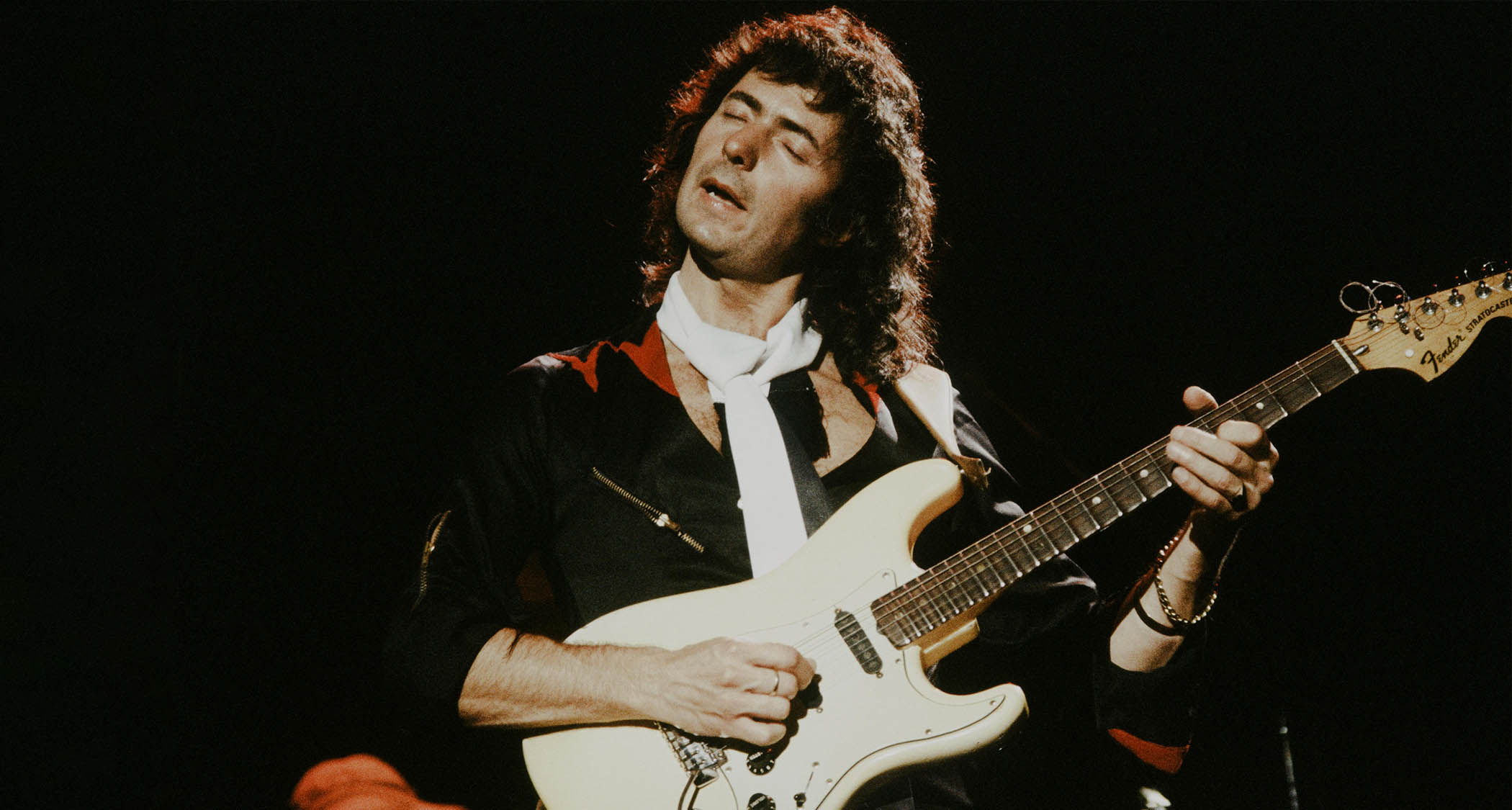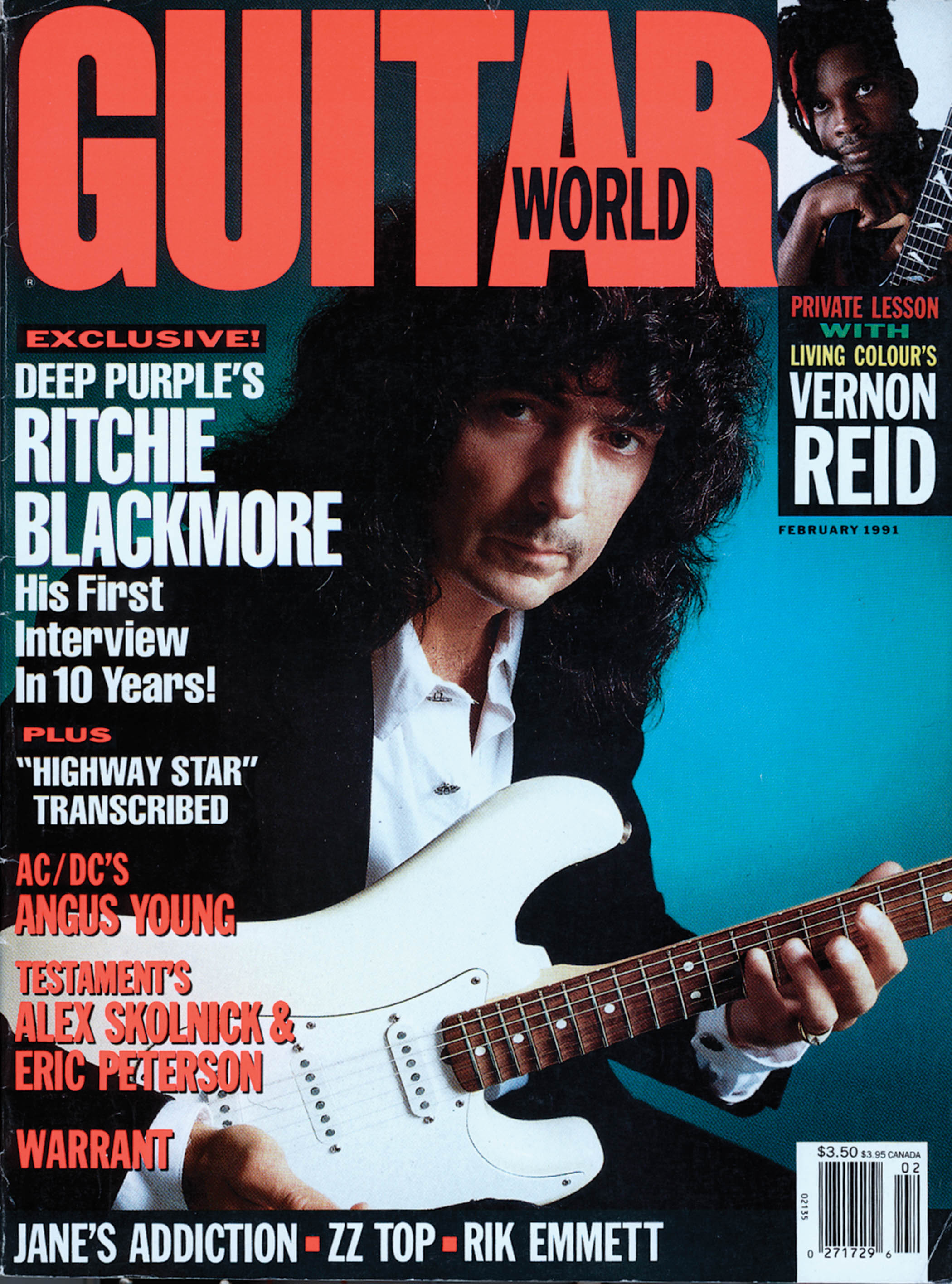“Eric Clapton’s roadie brought a Strat with him. I said, ‘Do you want to sell that guitar?’ He said, ‘I’ll sell it to you for £60’”: Ritchie Blackmore on why he switched from the 335 to the Stratocaster – and the one he used to record Smoke on the Water
Deep Purple icon Ritchie Blackmore tells us how a visit from Slowhand’s roadie turned him into a Fender Strat diehard – and why he kept breaking whammy bars

There are few players who have wielded the Fender Stratocaster with more authority than the legendary Ritchie Blackmore. The firebrand guitarist who brought the world some of its most iconic riffs (and solos) with Deep Purple and Rainbow has made it his number one electric guitar for decades, and at 79 he is in no mind to change now.
It wasn’t always this way. Longtime Blackmore fans will tell you it was the Gibson ES-335 that he made his name on. So what was it that got him swap the semi-hollow for the solidbodied doublecut?
Well, as he explains here, in an interview that takes us from his 1991 GW cover shoot to the present day, there was a knock at the door. Enter, Eric Clapton’s roadie… But first, what about that Strat from the GW cover?
Where and when did you buy this guitar?
“I have no idea. I have probably 12 Strats, but I noticed when looking at the picture that it’s not one of my more favored Strats. I think I picked it up because sometimes when I do a photo session, I take a guitar that I very rarely use. I still do it today with the acoustic guitars that I play some of the Renaissance music with.”
So there wasn’t really anything special about it?
“Just because it’s in the photograph, it usually means I don’t use it. And looking at that guitar, it definitely looks like one of my substandard Strats. Whereas if it was my favorite Strat, it may get lost, I may forget it or leave it somewhere or it might get damaged in transit. So the reason I’m playing that guitar in the photo is because it isn’t one of my favorite guitars – in case I lost it. My good ones are usually under lock and key.”
Get The Pick Newsletter
All the latest guitar news, interviews, lessons, reviews, deals and more, direct to your inbox!

Do you know what year it was?
“No. But the Strat I play now is an ’82. It’s a separate body put together with a different neck.”
Did you use the Strat on the cover for any notable recordings?
“No. I only use one, my favorite Strat, which is locked away for recordings or playing onstage. For photo sessions, as I said before, I use anything I can find.”
How did this guitar feel compared to your favorite Strat, which you’ve just mentioned?
“I think we should start speaking about my favorite Strat. And that is obviously white, and has a concave neck between the frets, which I usually do myself. It’s a very arduous process that takes about four days to shave down the wood. I cover the frets with tape, but I usually wind up having the guitar re-fretted with Gibson fat frets. I like really thick frets. I find the Fender frets are a bit too thin, personally.”
You gave me an idea of why you chose this Strat for your GW cover shoot, but are there any anecdotes from the day to share?
“Not really. As I said before, it was just a guitar lying around, so if I forgot it in the photo studio, it would be of no consequence in comparison to my good guitars.”
I like the sunburst Strat color because of Buddy Holly, but I was always fascinated by the white Strat
What got you started with Stratocasters?
“I do have a short story about my history with Strats. I was in Deep Purple in 1969 and I was living in Acton, London. We were all in the same house, the whole band, and Eric Clapton’s roadie came by the house because he knew one of my roadies, and he brought a Strat with him. I think it was black. So I said to him, ‘Do you want to sell that guitar? It looks interesting, and I wanted to try out a Strat.’
“He said, ‘I’ll sell it to you for £60.’ I said, ‘Okay, you’re on.’ So, for £60, I bought one of Eric Clapton’s old Strats that he obviously didn’t want because he gave it to the roadie. That was my initiation into playing a Strat. Up until then, I always played a Gibson ES-335.”
Did you use that Strat on any notable recordings?
“I think we made a record named Emmaretta, and I used a wah-wah pedal with that Strat. However, the neck was a little bit too bowed, so I moved on from that Strat to buying another Strat from my friend’s shop in London. It was a sunburst Strat and a black Strat.
“I often used to change necks on my Strats, sometimes with the three or four screws on the back of the neck. If I remember correctly, I changed the neck from the black Strat to the sunburst Strat because I preferred that neck.”
Was that, by chance, the guitar you used on Smoke on the Water?
“At this point, I had three or four Strats. The Smoke on the Water guitar, I believe, was the sunburst guitar with the black Strat’s neck. A lot of people ask me which guitar I used. I like the sunburst Strat color because of Buddy Holly, but I was always fascinated by the white Strat.
“I remember Colin [Manley] from the Remo Four playing a white Strat back in ’66. He was the first player I saw play with a white Strat, and it was very majestic and to me. It kind of said, ‘I don’t have to be any color because white stands out.’
“I wore a lot of black on stage and liked the contrast. Then I saw Jeff Beck had a white Strat, then Jimi Hendrix had a white Strat. But like I said, the first one I saw was Colin from the Remo Four playing it in Hamburg, Germany.
“My subliminal thinking was, ‘I would really like to get a white Strat one day.’ Now it would seem every guitar player that gets a Strat is playing a white Strat, so I may have to rethink my thinking on that one.”
The white Strat is kind of synonymous with you, though.
“Maybe I should get a green or yellow one. There was a time after seeing Albert Lee playing a black Les Paul Gibson in ’63, and I wanted a black Les Paul; however, by the time I got around to buying a black Les Paul, they had become so popular, everyone had one. I always liked to be different, so that put me off getting a black Les Paul. I stayed with my red Gibson [ES-335]. Les Paul was an incredible influence on me in the early ’60s.”
Whenever I would store the guitars or amps that I wasn’t using, and we would go on tour, they were stored in London. I would come back, and they were usually stolen
OK, just one more question about the Strat you’re holding on the February 1991 GW cover! Do you still own it?
“I have about three or four Strats, as I am a firm believer in not having loads of them. I can only play one at a time, so... And I do have a very special Strat. I also went through a period in the ’80s of playing with a tremolo arm, but I kept breaking them, so I had them made twice as thick so I wouldn’t break them.
“Funnily enough, I still broke them. So I had them made three times as thick [with] a ½” round tremolo arm. I have two Strats I count as my favorites. One has a ½” tremolo arm, and one has a really nice neck that I tend to play when I’m playing rock.
“It’s also very heavy, and I find that with my back problem, it’s very hard to stand on stage with this guitar because it’s so heavy, so I usually sit on a stool, which I know is not very rock ’n’ roll, but that’s what happens when you’re 78.”
Do you know what happened to the less-favored Strat you posed with on the cover?
“I’m not exactly sure what happened to the guitar on the cover. But whenever I would store the guitars or amps that I wasn’t using, and we would go on tour, they were stored in London. I would come back, and they were usually stolen.”
What does the Fender Strat mean to you?
“A way of paying the bills. It also happens to be an incredible guitar. It’s very adaptable for all sorts of music [like] country, rock [and] jazz.”
Andrew Daly is an iced-coffee-addicted, oddball Telecaster-playing, alfredo pasta-loving journalist from Long Island, NY, who, in addition to being a contributing writer for Guitar World, scribes for Bass Player, Guitar Player, Guitarist, and MusicRadar. Andrew has interviewed favorites like Ace Frehley, Johnny Marr, Vito Bratta, Bruce Kulick, Joe Perry, Brad Whitford, Tom Morello, Rich Robinson, and Paul Stanley, while his all-time favorite (rhythm player), Keith Richards, continues to elude him.
Ozzy Osbourne’s solo band has long been a proving ground for metal’s most outstanding players. From Randy Rhoads to Zakk Wylde, via Brad Gillis and Gus G, here are all the players – and nearly players – in the Osbourne saga
“I could be blazing on Instagram, and there'll still be comments like, ‘You'll never be Richie’”: The recent Bon Jovi documentary helped guitarist Phil X win over even more of the band's fans – but he still deals with some naysayers














